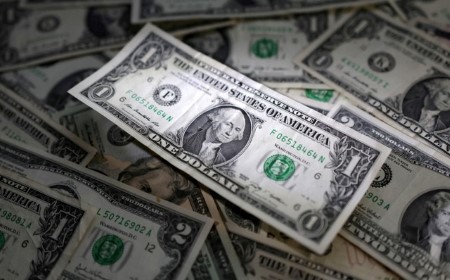Aug 15 – As waves of volatility crashed over emerging markets on Monday, most notably in Argentina and Russia, the focus on Tuesday once again returns to the root of much of the deeper anxiety and uncertainty around EM: China.
Investment, retail sales, unemployment, and industrial production figures for July will be released against a worrisome backdrop of deflation, slowing growth, market weakness, and growing contagion risks from an imploding property sector.
As if that were not enough for Asian markets on Tuesday, minutes of the Reserve Bank of Australia’s last policy meeting, Australian wage growth data, and second-quarter GDP growth figures from Japan will also be released.
Currency markets are also on intervention watch from Japanese authorities, with the yen falling through the 145 per dollar area and anchored around its weakest level against the euro since 2008.
If recent Chinese economic numbers are any guide, the latest batch on Tuesday is liable to disappoint. Reuters polls of economists suggest annual growth in investment and industrial output will remain steady from June’s levels, while retail sales growth will rise to 4.5% from 3.1%.
Authorities have so far resisted the growing clamor for large-scale fiscal or monetary stimulus. One of the reasons is the currency – it is already extremely weak and investors are shunning Chinese assets. Beijing will not want to add fuel to either fire.
The offshore yuan slumped on Monday to its lowest level this year, approaching the 7.30 per dollar mark, and the yuan’s official onshore exchange rate is the weakest in a month.
Tuesday’s data dump comes a day before the central bank delivers its latest monthly monetary policy decision. A Reuters survey of economists says rates on the bank’s medium-term policy loans will be left unchanged, although another round of notably weak economic indicators could shift the dial.
Some investors are slashing their exposure to China. Regulatory filings show that some major US-based hedge funds cut their holdings of Chinese companies in the second quarter.
China’s blue-chip CSI 300 index slipped 0.7% on Monday, following Friday’s 2.3% slide – the biggest fall since October – contributing to weakness across the continent and the EM complex.
MSCI’s Emerging Market and Asia ex-Japan indices both fell 1.3% on Monday, following 1% falls on Friday. With the US dollar and US Treasury yields marching higher, global financial conditions are tightening and there doesn’t appear to be any respite for emerging markets on the immediate horizon.
Here are key developments that could provide more direction to markets on Tuesday:
– China retail sales, unemployment, investment, industrial production (July)
– RBA minutes
– Japan Q2 GDP
(By Jamie McGeever; Editing by Marguerita Choy)







 DOWNLOAD
DOWNLOAD











